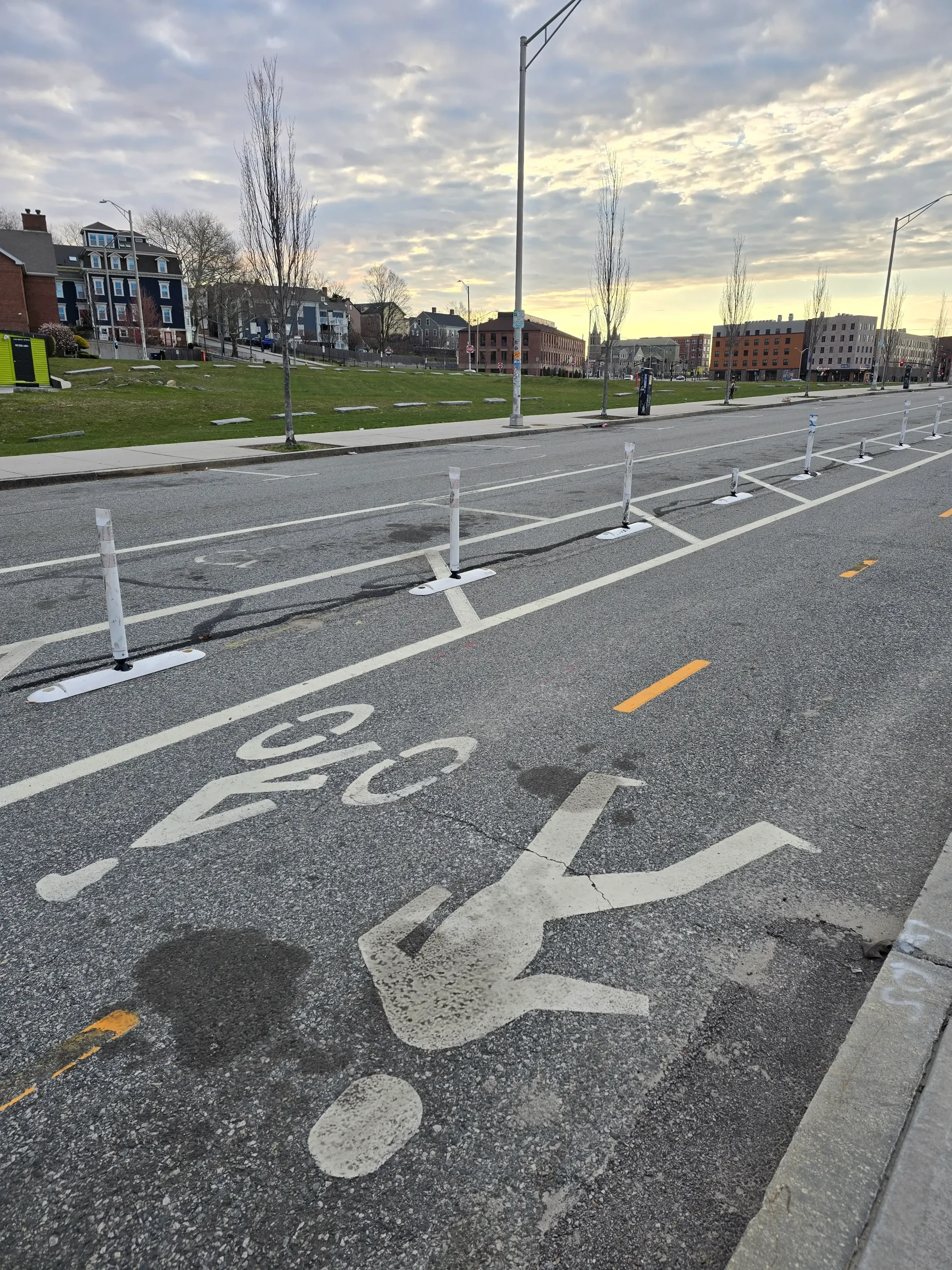Providence Mayor Brett Smiley has officially announced his plan to remove the South Water Street bike lane. Following his announcement, there has been an enormous immediate backlash from the community. Many points and arguments have been put forward, and with that, this post compiles and lists them accordingly. These points can similarly be used for other bike lane removal initiatives.
Note: Before the South Water Street bike lane, the area was dangerous, as shown here.
Positives
- May temporarily reduce traffic for a short portion of the day, but probably not due to induced demand.
- Appeases a few select businesses and wealthy donors who backed Mayor Smiley.
- Furthers the notion that Providence is a corrupt city, downgrading its reputation.
Negatives
- Paints Smiley and Providence’s initiatives in a hypocritical light. Mayor Smiley just recently signed the Green and Complete Streets ordinance and Vision Zero, and was in attendance when Pete Buttigieg visited to announce the expansion of another Providence bike path. In addition, Smiley has put on hold traffic-calming infrastructure for “further study,” yet he was noticeably quick to make a decision about the South Water Street bike lane based on little knowledge.
- Encourages dangerous driving: speeding, harder to cross the street, and more accidents. For comparison, see the adjacent South Main Street as well as North Main Street; better yet, see how South Water Street was before the installation of the bike lane.
- Overall reduction of community and green space. This strip of lane is an extension of community space. It’s also where the community can interact more personally. There will be less space for kids, families, and others. Notably, there’s not enough community space for them already.
- Costs substantially more than the quoted $750,000, as that only represents the initial cost. The long-term consequences—pollution, road damage, fewer businesses, more construction to fix issues, and more police required to patrol due to increased lack of safety—will incur high costs where the taxpayers will be hit the hardest.
- Deters affordable housing that we’re set to build on that street and nearby. Several parcels in that area are already primed for dense housing, which requires multi-modal transit.
- Sets a bad precedent. If we remove the bike lane due to “lack of use” or “not enough use,” does this mean sidewalks and other areas may get removed? What about the other bike lanes throughout Providence?
- Increases traffic. Additional lanes have been shown to congest traffic more through induced demand.
- Exacerbates air, noise, and water (runoff, flooding, etc.) pollution.
- Discourages healthy lifestyles through disincentivizing walking, biking, and other outdoor activities.
- Sours the reputation of the area. This locale has received extensive renovations, including the Pedestrian Bridge and green space extensions. With that, it has become a popular hub for families, gatherings, and events.
- Not everyone can afford a car, is able, or wants one. A decision to remove reeks of classism, ableism, and “transportationism.”
- Fulfillment of bad engineering practices and poor studies. Highways through residential neighborhoods have been historically detrimental. In addition, gauging something by its lack of use, specifically partially connected bike lanes in this case, isn’t even relevant. For example, if we built half a car lane or a lane that connected to nowhere, would measuring its use be a good indicator of its success?
- Hurts businesses. People walking, biking, etc., are more likely to stop at businesses and remember them. A highway isn’t conducive to this, either. There are also already a number of businesses that utilize the bike lane, especially during events.
- More people, their pets, and wildlife will be killed. Since the installation of the bike lane, there has been a documented positive impact, including fewer deaths and accidents.
- Negatively impacts college students and nearby universities. College students rely heavily on non-car transit and dense housing.
- Hurts tourism. This area is a prime tourist spot, and tourists generally appreciate being able to get around without a car, as well as community space.
- Doesn’t actually address the Washington Bridge issue.
